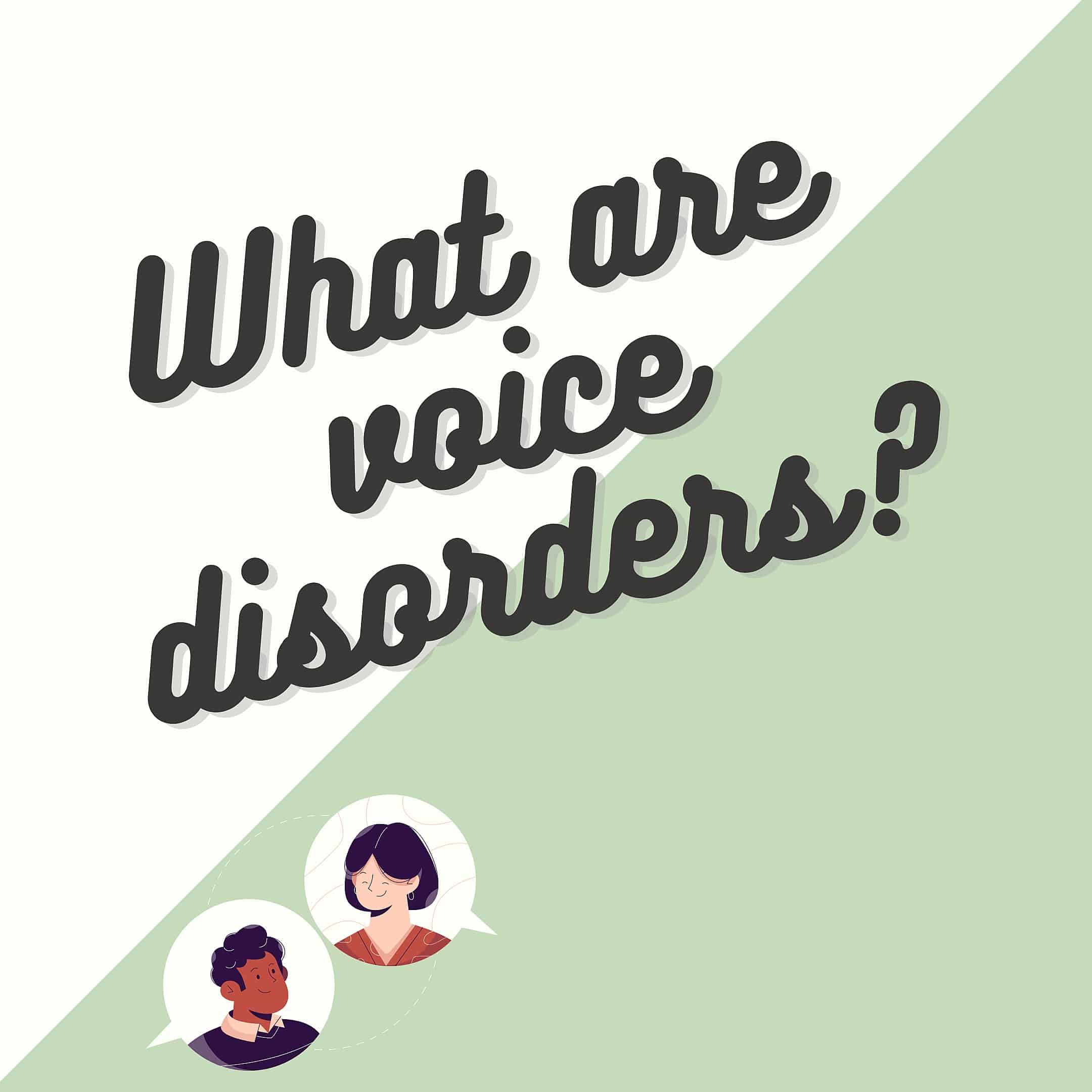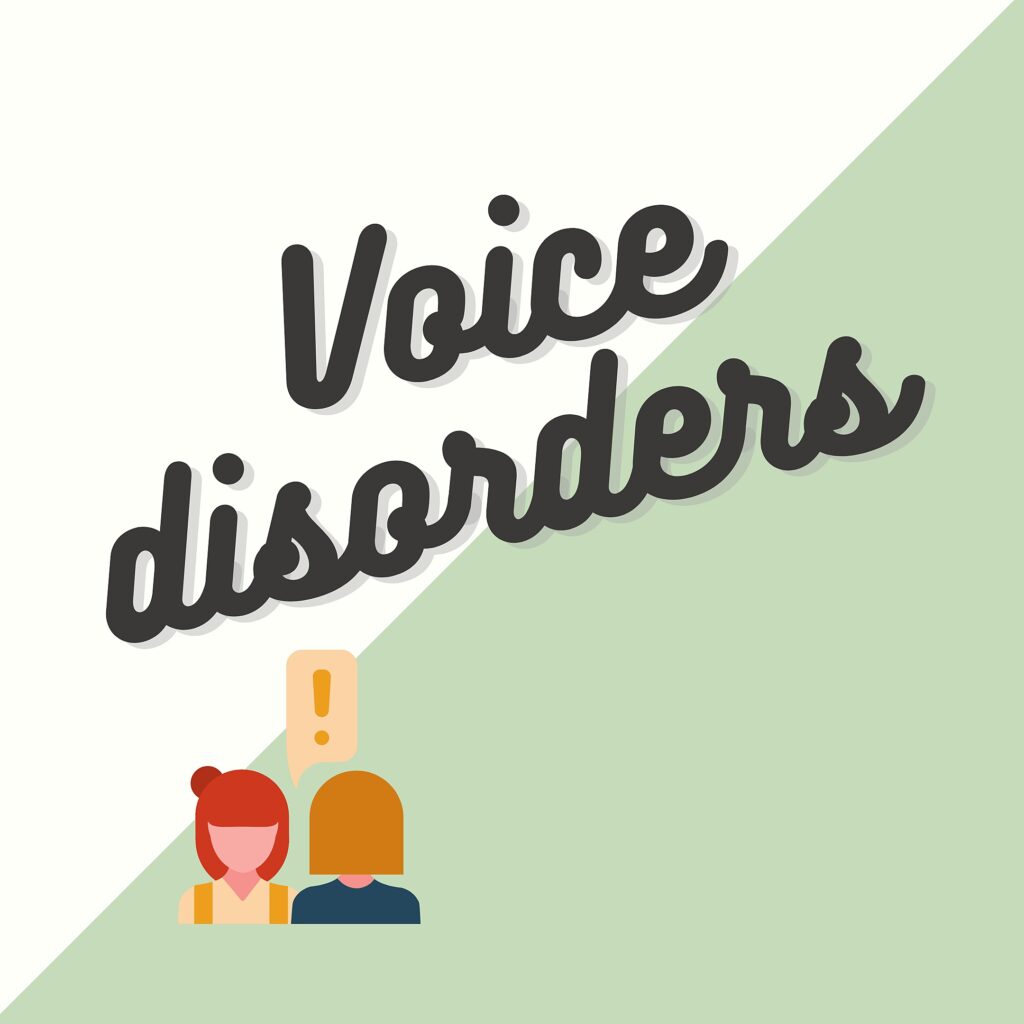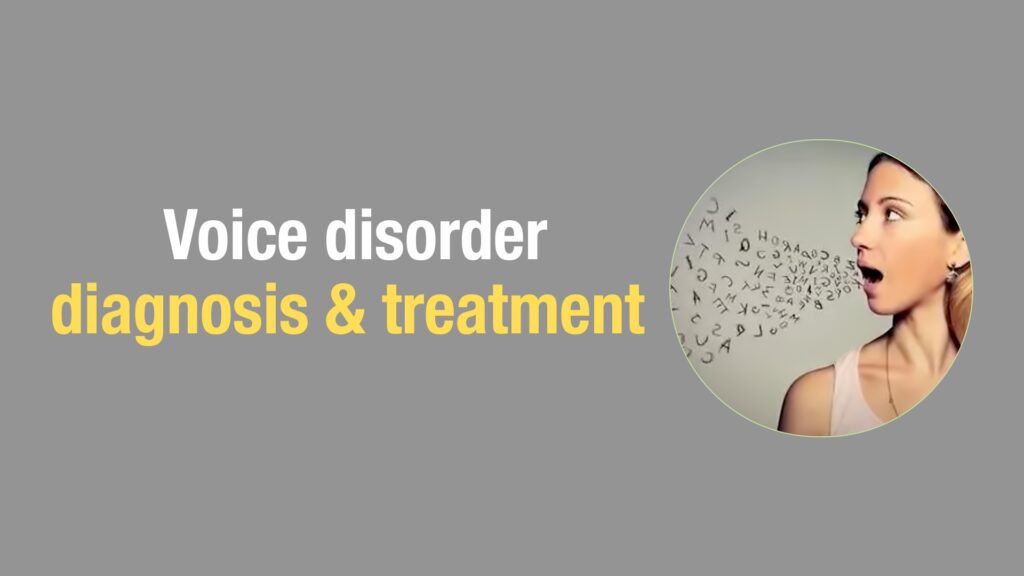WHAT ARE VOICE DISORDERS?
People develop voice problems for a number of reasons. Doctors who specialize in ear, nose, and throat (ENT) disorders and speech pathology specialists are involved in diagnosing and treating voice disorders.
Treatment depends on what is causing your voice disorder but might include voice therapy, medication, injections, or surgery.

CAUSES
Your voice box (larynx) is made up of cartilage, muscle, and mucous membranes situated at the top of your windpipe (trachea) and the bottom of your tongue. Your vocal cords are two flexible bands of muscle tissue that lie at the entrance of the windpipe. Sound is generated when your vocal cords vibrate.
This vibration comes from the air moving through the larynx, bringing your vocal cords closer to each other. Your vocal cords also help close your voice box when you swallow, stoping you from inhaling food or fluid.
If your vocal cords become swollen, develop growths, or become paralyzed, they cannot work properly, and you might develop a voice disorder.
Some common voice disorders include:
- Laryngitis
- Muscle tension dysphonia
- Neurological voice disorders, like spasmodic dysphonia
- Polyps, nodules, and cysts on the vocal cords (non-cancerous lesions)
- Precancerous and cancerous lesions
- Vocal cord paralysis or weakness
- White patches are known as leukoplakia
RISK FACTORS
Many risk factors could contribute to a voice disorder, including:
- Aging
- Alcohol use
- Allergies
- Gastroesophageal reflux disease (GERD)
- Illnesses, like colds or upper respiratory infections
- Improper throat-clearing over a long time
- Neurological disorders
- Psychological stress
- Scarring caused by neck surgery or from trauma to the front of the neck
- Screaming
- Smoking
- Throat cancer
- Throat dehydration
- Thyroid problems
- Voice misuse or overuse

DIAGNOSIS
Your doctor will ask you detailed questions about your voice problems and check you thoroughly. A topical anesthetic might be applied to numb your vocal cord tissues before your doctor checks them using one of the following tools:
- Mirror – Your doctor inserts a long, rigid instrument with an angled mirror, identical to a dental mirror, into your mouth.
- Flexible laryngoscope – Your doctor inserts a flexible tube containing a light and camera into your nose.
- Rigid laryngoscope – Your doctor inserts a rigid viewing tube into your mouth.
- Videostroboscope – Your doctor inserts a camera that is combined with a flashing light through your mouth to offer a slow-motion view of your vocal cords as they move.
Additional tests are sometimes used:
- Sound (acoustic) analysis – Using computer analysis, your doctor could measure irregularities in the sound produced by the vocal cords.
- Laryngeal electromyography – Small needles are inserted into the skin to measure the electric currents in your voice box muscles.

TREATMENT
Depending on your diagnosis, your doctor will suggest one or more treatments:
- Rest, liquids, and voice therapy – Like every other portion of the body, the vocal cords require constant rest and liquids. Speech pathology specialists could teach you how to utilize your voice more effectively by voice therapy or treatment, how to appropriately clean your throat, and how much fluid to drink.
- Allergy treatments – If an allergy is creating too much mucus in your throat, your doctor or an allergy specialist could identify the allergy’s cause and provide treatment.
- Smoking cessation – If your voice issue is the outcome of smoking, quitting smoking could help better your voice along with several other regions of your health, like improving your heart health and lowering your cancer risk.
- Medications – Various medications are available for treating voice disorders. Depending upon the cause of your voice disorder, you might need to take medicine to lower swelling, treat gastroesophageal reflux, or stop blood vessel regrowth. Medications could be taken by mouth, injected into the vocal cords, or applied topically during surgery.
Procedures
- Removal of lesions – Noncancerous lesions (polyps, nodules, and cysts) on the vocal cords might need surgical removal. Your physician could remove the noncancerous, precancerous, and cancerous lesions involving recurrent respiratory papillomatosis and white patches (leukoplakia) with the help of microsurgery, carbon dioxide laser surgery, and, when appropriate, the latest laser treatments, including potassium titanyl phosphate (KTP) laser treatment.
KTP laser treatment is a state-of-the-art treatment that treats lesions on the vocal cords. It treats a lesion by cutting off the blood circulation to the lesion, allowing the lesion to be removed while preserving the maximum amount of hidden tissue. - Botox injections – Injections of tiny amounts of onabotulinumtoxinA (Botox) into the skin on your neck might be done in some cases. These injections could reduce muscle spasms or abnormal movements if you have a neurological movement disorder that damage the vocal muscles of the larynx (spasmodic dysphonia).
Sometimes one vocal cord might stop moving (become paralyzed). If you have one paralyzed vocal cord, you might usually complain of hoarseness. You may also complain of choking when you drink liquids, but rarely have trouble swallowing solid foods. Sometimes the issue goes away with time.
If the problem continues, your doctor might conduct one of several procedures. These procedures could push the paralyzed vocal cord closer to the middle of the trachea or windpipe to allow the vocal cords to meet and vibrate more closely. This improves the voice and enables the larynx to close when you swallow.
 Treatments include:
Treatments include: - Bulk injection – Body fat, collagen, hyaluronic gel, or other accepted filler substance is administered, or by your mouth or the skin onto your neck, to add bulk to the paralyzed vocal cord or to treat the weakness of the vocal cord. The material closes the gap beside your vocal cord and brings it closer to your other vocal cord, enabling them to vibrate more closely.
- Thyroplasty – A tiny opening is created in the cartilage from the outside of your voice box. The doctor places an implant into the opening and pushes it against the paralyzed vocal cord, bringing it closer to your other vocal cord.
- Replacing the damaged nerve (reinnervation) – In this procedure, a healthy nerve is moved from a different region of your neck to replace the affected vocal cord. Your voice might improve in six to nine months. Many doctors combine this procedure with a bulk injection.
If you or anyone you know is suffering from voice disorders, our expert providers at Specialty Care Clinics will take care of your health and help you recover.
Call us on (469) 545-9983 to book an appointment with our specialists.
